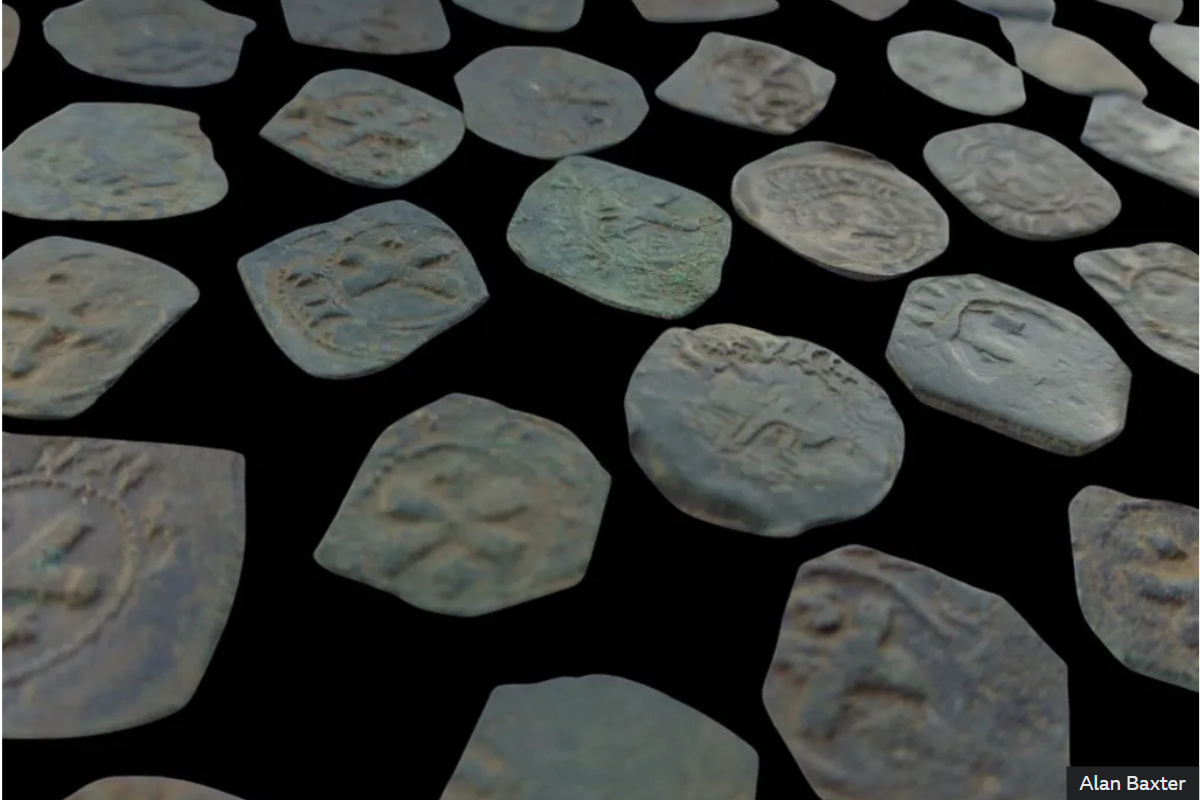
He had been waiting for years to be able to search in the designated field. Then he discovered a hoard of medieval coins...
Categories: Nálezy nejenom s detektorem ve Velké Británii a Irsku
When Alan Baxter found a massive 13th-century silver and gilt medieval ring in a farmer's field in Fife, Scotland, he knew there might be other ancient artefacts nearby. However, the hard and tall stubble from the dense oat crop each year made it impossible to search, so the farmer had to wait four years before planting and harvesting carrots.
"Because of the carrots, deep ploughing took place and I could finally get my detector just above the ground, Baxter told BBC Scotland News, adding that searching in the stubble was virtually impossible. I couldn't move, there was something everywhere. I didn't want to go home at all," the happy detectorist described the first days of searching in the patiently waiting field.
The highlight of his search was a set of coins from the reign of King James III of Scotland: "I pulled out my first penny and knew it was really rare because I knew our coins," he explained. "After that it was repeated and within a few weeks I found fifty-two coins in total. To hold something hundreds of years old is extraordinary. You get a real tingling sensation that goes all over your body and that lasts all day and all night," he added.
The 500-year-old coins are copper and irregularly shaped. Surprisingly, they are very well preserved. They depict the Saltire - the cross of St Andrew - on one side and a crown on the other. In their day, they were worth a quarter of a penny. An expert from the National Museum of Scotland said that this was the first discovery of James III coins since 1919. Alan Baxter paid £5,000 - about £150,000 - for the set.
Under Scottish law, all finds of archaeological, historical or cultural significance must be reported and can be claimed by the Crown. A detectorist can only search with the permission of the landowner. Finds are then allocated to the museum through the Treasure Trove system. Detectorists usually share the money with the landowner, but it is not their responsibility.
Baxter also found two 1p coins from the reign of King John Balliol (1292 to 1296) in the same field. They are extremely rare and these two are the only ones ever found in Scotland. He also discovered 69 medieval coins from the reign of King Edward I of England (1272 to 1307), whose armies invaded Scotland in the late 13th century. He also found several Bronze Age objects. He wrote a book about his search, Making History, which describes the search stories and their background.
Roman Nemec
Sources: bbc.com, gov.uk, ancient-origins.net

Alan Baxter with his detector

Baxter waits to date and identify a probable Bronze Age arrow
 some of the coins of James III
some of the coins of James III
 parts of medieval belts from the 12th-14th centuries around Fife
parts of medieval belts from the 12th-14th centuries around Fife
 coins of John Balliol, who ruled from 1292-1296
coins of John Balliol, who ruled from 1292-1296
 A medieval silver and gilt ring from between the 13th and 14th centuries
A medieval silver and gilt ring from between the 13th and 14th centuries

Alan Baxter
The article is included in categories:





